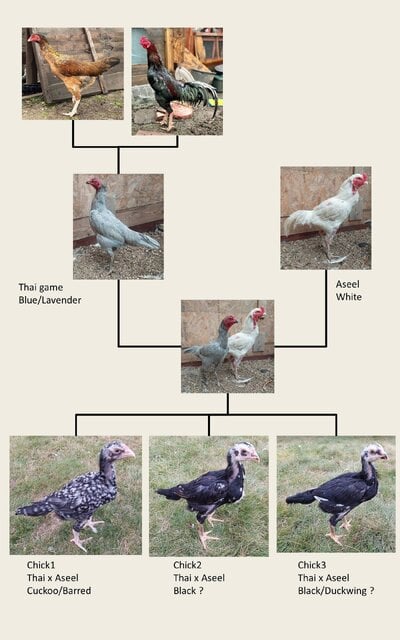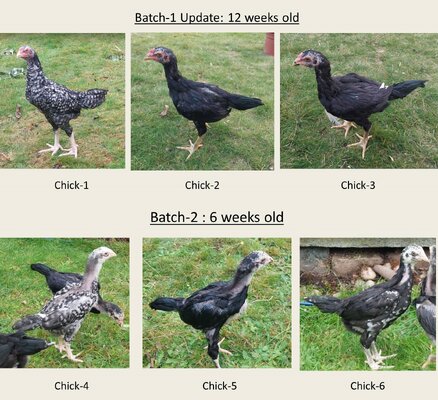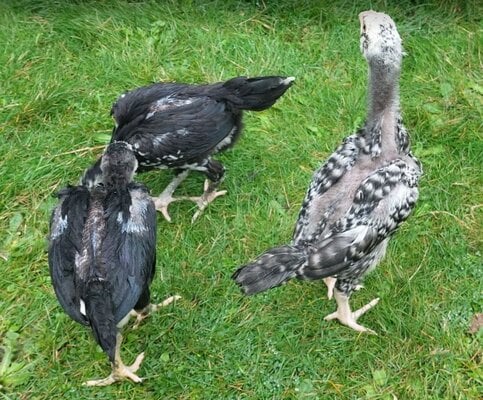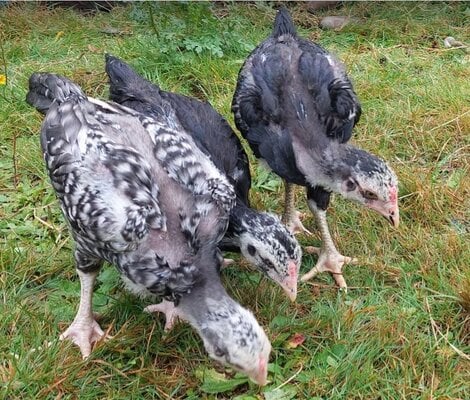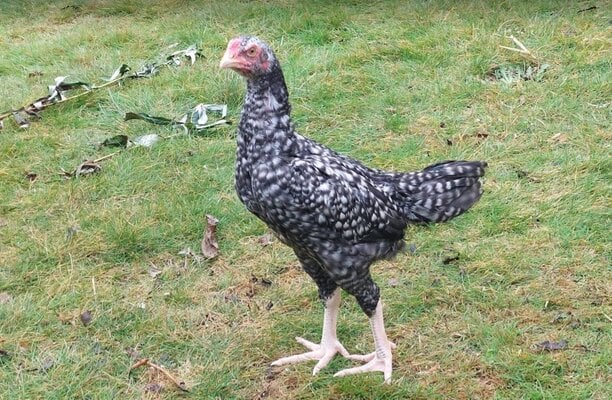- Thread starter
- #21
Update. Batch 1 chicks are now at 10 weeks old. Looks like all 3 are roosters so i will only be proceeding with one at this stage (bared/cuckoo Black & White rooster)
I also have a second batch that has hatched, now 6 weeks old. Unfortunately it looks like 3 roosters again so may not keep any of them. There were also 3 more hatch mates, one black/brown, and 2 black chicks which i gave away.
I also have a second batch that has hatched, now 6 weeks old. Unfortunately it looks like 3 roosters again so may not keep any of them. There were also 3 more hatch mates, one black/brown, and 2 black chicks which i gave away.

